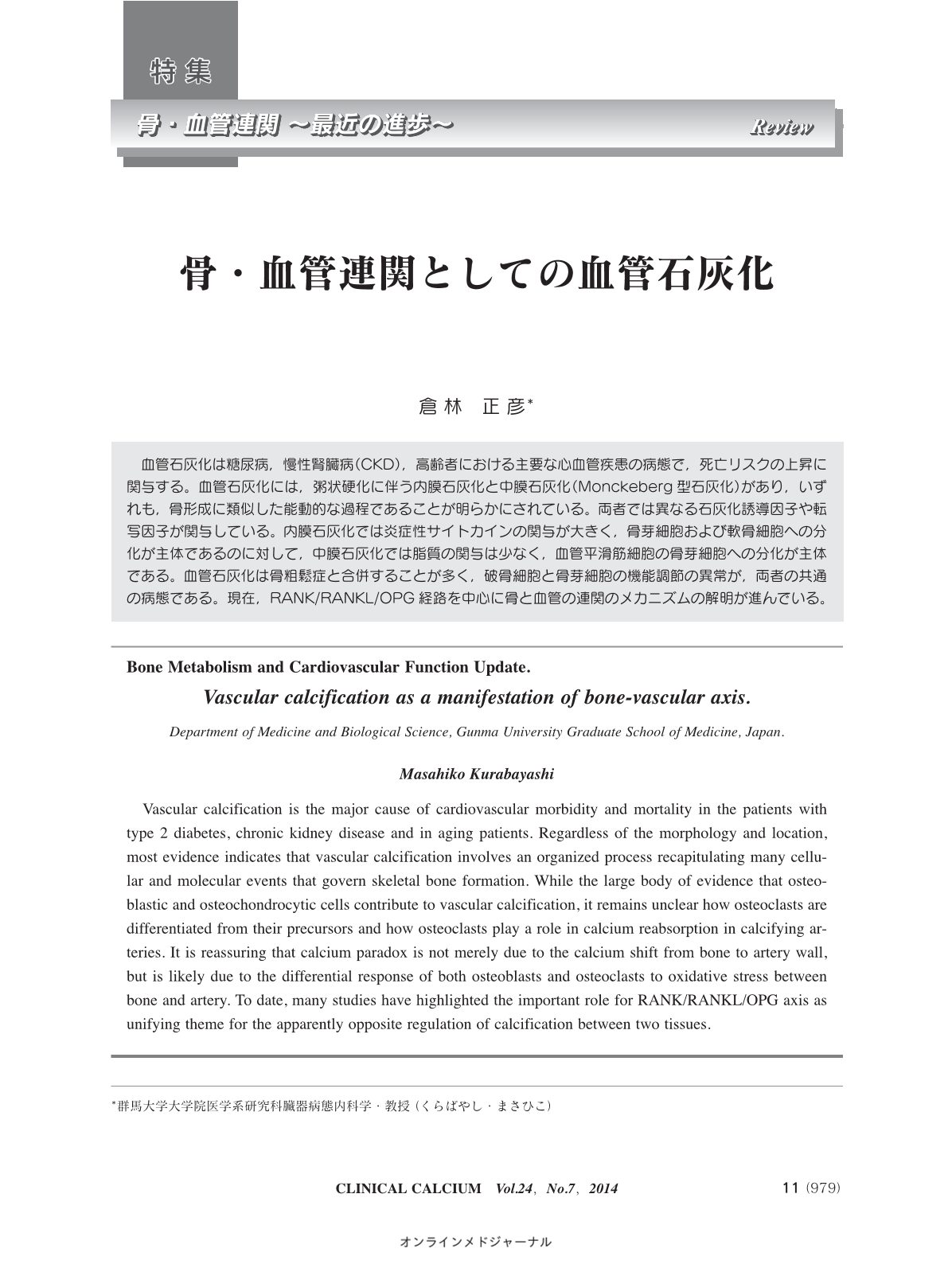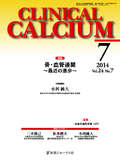Japanese
English
- 有料閲覧
- Abstract 文献概要
- 1ページ目 Look Inside
- 参考文献 Reference
血管石灰化は糖尿病,慢性腎臓病(CKD),高齢者における主要な心血管疾患の病態で,死亡リスクの上昇に関与する。血管石灰化には,粥状硬化に伴う内膜石灰化と中膜石灰化(Monckeberg型石灰化)があり,いずれも,骨形成に類似した能動的な過程であることが明らかにされている。両者では異なる石灰化誘導因子や転写因子が関与している。内膜石灰化では炎症性サイトカインの関与が大きく,骨芽細胞および軟骨細胞への分化が主体であるのに対して,中膜石灰化では脂質の関与は少なく,血管平滑筋細胞の骨芽細胞への分化が主体である。血管石灰化は骨粗鬆症と合併することが多く,破骨細胞と骨芽細胞の機能調節の異常が,両者の共通の病態である。現在,RANK/RANKL/OPG経路を中心に骨と血管の連関のメカニズムの解明が進んでいる。
Vascular calcification is the major cause of cardiovascular morbidity and mortality in the patients with type 2 diabetes, chronic kidney disease and in aging patients. Regardless of the morphology and location, most evidence indicates that vascular calcification involves an organized process recapitulating many cellular and molecular events that govern skeletal bone formation. While the large body of evidence that osteoblastic and osteochondrocytic cells contribute to vascular calcification, it remains unclear how osteoclasts are differentiated from their precursors and how osteoclasts play a role in calcium reabsorption in calcifying arteries. It is reassuring that calcium paradox is not merely due to the calcium shift from bone to artery wall, but is likely due to the differential response of both osteoblasts and osteoclasts to oxidative stress between bone and artery. To date, many studies have highlighted the important role for RANK/RANKL/OPG axis as unifying theme for the apparently opposite regulation of calcification between two tissues.



